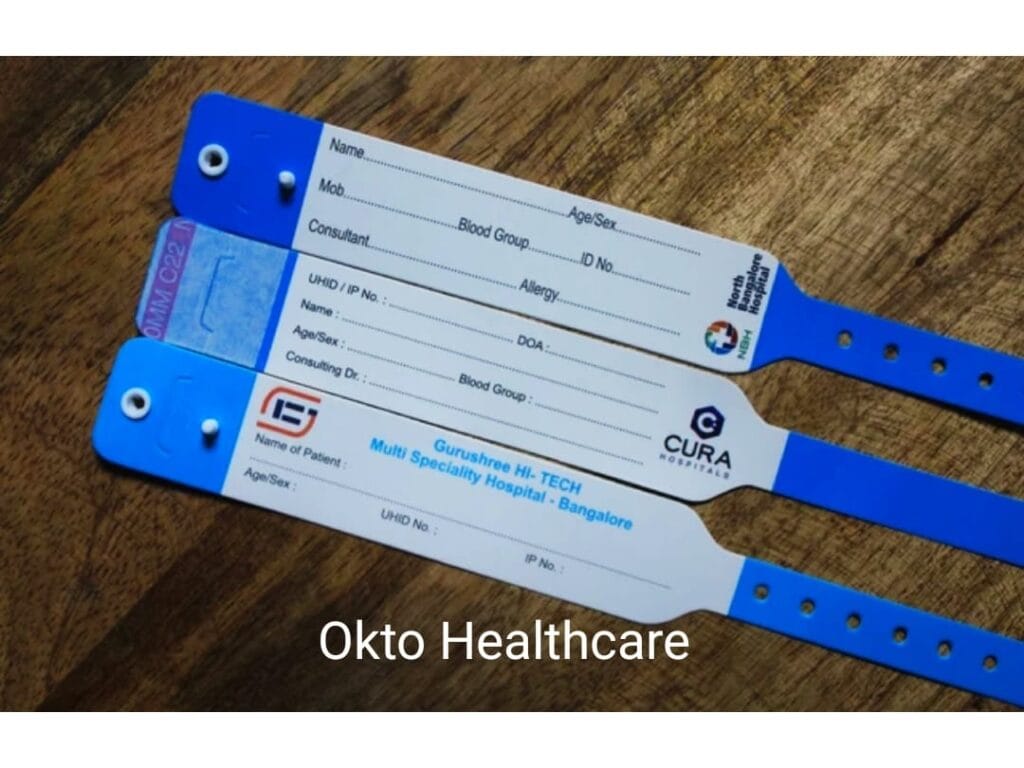The Key Functions of an Efficient Patient Identification Band in Medical Care
The Key Functions of an Efficient Patient Identification Band in Medical Care
Blog Article
Simplifying Individual Treatment With Reliable Identification Bands
The application of efficient identification bands is a pivotal component in enhancing patient treatment within healthcare settings. As the landscape of patient recognition evolves, one need to take into consideration the ramifications of these systems on overall health care shipment and patient results.
Value of Person Recognition
Making certain accurate client recognition is critical in healthcare settings, as it directly affects the safety and quality of treatment provided. Misidentification can lead to significant mistakes, consisting of administering the wrong drug, carrying out inaccurate procedures, or miscommunicating essential individual info. Such errors not just threaten individual security but can additionally lead to lawful ramifications and lowered trust fund in health care systems.
Reliable individual identification is fundamental to developing a protected setting where individuals get tailored and ideal care. It facilitates the accurate documents of medical histories, allergies, and therapy plans, making certain that medical care service providers have accessibility to vital info at all times. In addition, robust recognition protocols aid simplify communication among clinical staff, improving cooperation and decreasing the risk of blunders.

Kinds of Identification Bands
Recognition bands play a vital role in keeping accurate patient documents and boosting security within healthcare atmospheres. Various kinds of identification bands are made use of to cater to the certain needs and needs of different person populations.

An additional kind is the ankle band, which is specifically beneficial for infants and infants, making sure that identification continues to be undamaged even throughout treatment treatments. Specialized bands, such as those for allergy alerts or drop risk indications, supply additional layers of safety by attracting immediate interest to important patient problems.
Just recently, electronic recognition bands have actually gained popularity, including barcodes or RFID innovation that can be checked to promptly get individual information. These bands streamline process and reduce the threat of human mistake during client identification processes.
Advantages of Reliable Recognition
Reliable identification of people through using identification bands contributes dramatically to overall client security and care high quality. By ensuring that each individual is properly determined, medical care companies can properly match clinical therapies and treatments to the right person, reducing the risk of errors. This is particularly important in atmospheres with high individual turn over, where the capacity for misidentification is higher.
In addition, effective recognition bands boost interaction among medical care groups. Clear and precise client identification cultivates partnership and makes sure that all team participants understand a patient's specific demands and case history. This communication is crucial for supplying collaborated care, especially in emergency situations where time is vital.

Eventually, efficient recognition via making use of recognition bands not just safeguards clients however likewise promotes a society of safety and security within healthcare centers (Patient Identification Band). By prioritizing accurate recognition, medical care organizations can improve outcomes and boost the total individual experience
Executing Identification Systems
While the relevance of individual identification is well acknowledged, the implementation of durable identification systems positions a complex difficulty for medical care organizations. Establishing effective recognition systems requires a detailed strategy, encompassing modern technology, workers training, and process combination.
First, companies have to choose appropriate read review recognition technologies, such as barcode scanning, RFID, or biometric systems. Patient Identification Band. These innovations ought to be reviewed based on price, functionality, and compatibility with existing infrastructure. A pilot program can help recognize prospective concerns before full-blown application
Following, extensive training for team is important. All personnel have to understand the value of accurate individual recognition and excel in the use of the picked innovations. Regular training updates and evaluations can reinforce best methods and ensure continued conformity.
Additionally, health care companies should develop standard treatments for patient identification across all departments, enhancing and reducing discrepancies interaction. Regular audits can help determine gaps in adherence to these procedures.

Inevitably, an effective application of recognition systems not just improves individual security but also fosters a culture of accountability and persistance within healthcare settings, making sure reputable and consistent client treatment.
Future Trends in Client Recognition
Improvements in innovation are set to reinvent patient recognition methods in healthcare settings. The combination of biometric identification approaches, such as fingerprinting and face recognition, is anticipated to boost precision and safety. These innovations can considerably minimize the threat of misidentification, making certain that individuals receive the proper therapies and drugs.
Additionally, the application of blockchain technology for person documents is getting traction. This decentralized technique can give a tamper-proof and safe method for taking care of client identifications, consequently enhancing access to essential information throughout various healthcare service providers.
An additional trend is the boosting use mobile health and wellness applications that leverage QR codes for individual identification. These applications permit for real-time updates and simple access to individual information, empowering health care specialists to make informed my latest blog post choices promptly.
Additionally, expert system (AI) is poised to play a vital role in examining person identification information, determining patterns, and anticipating possible identification errors before they happen.
As these modern technologies progress, they promise not only to enhance individual safety and security but additionally to boost the overall efficiency of health care shipment systems. Embracing these developments will certainly be critical for future-proofing patient care practices.
Final Thought
In verdict, reliable recognition bands are crucial for boosting person safety and security and care top quality within medical care setups. By decreasing the threats connected with misidentification, these bands facilitate accurate and timely info access, inevitably boosting communication among healthcare suppliers. The application of robust recognition systems not just cultivates a society of security but also settings healthcare institutions to adjust to future patterns in client identification innovation, guaranteeing optimal end results for individuals in diverse clinical atmospheres.
As the landscape of individual identification develops, one should consider the effects of these systems on general healthcare distribution and person results.Effective individual identification is basic to developing a protected setting where clients obtain tailored and suitable care. Eventually, prioritizing reliable client recognition techniques not only promotes a society of security yet likewise adds to enhanced patient results and overall contentment with healthcare solutions.
Effective identification of people with the usage of identification bands adds substantially to general patient security and care top quality. The execution of robust recognition systems not only cultivates a society of security but additionally settings medical care organizations to adjust to future trends in person recognition technology, making sure optimal results for people in varied scientific environments.
Report this page